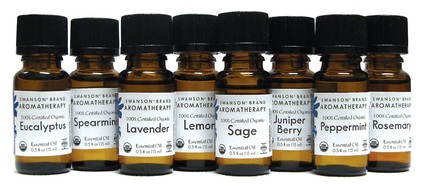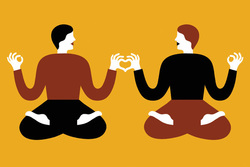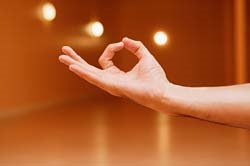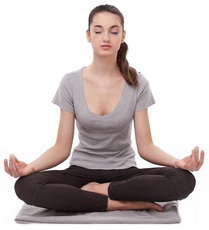We talk a lot here about yoga, breathing and meditation to help with anxiety, but there are many alternative therapies that help us heal from stress and compliment our yoga/meditation practices and I wanted to share a fun one with you today. Aromatherapy.
What is aromatherapy?
Aromatherapy is a form of alternative medicine that uses volatile plant materials, known as essential oils, and other aromatic compounds for the purpose of altering a person's mind, mood, cognitive function or health. *from wikipedia
You may have already heard of helpful essential oils and perhaps even used some. For example, eucalyptus is a popular one to add to steaming water to help you break up congestion. But what are some, if any, that can help ease our anxious minds?
7 Essential oils to help ease anxiety
1) Lavender
The scent has a calming effect which aids in relaxation and the reduction of anxiety and stress
2) ylang ylang
Ylang ylang is extremely effective in calming and bringing about a sense of relaxation, and it may help with releasing feelings of anger, tension, and nervous irritability
3) Bergamot
Studies have shown that a sniff of this essential oil can be effective at helping to reduce the psychological stress responses, serum cortisol levels and blood pressure in patients with hypertension.
4) Sandlewood
One of sandalwood’s most important uses is to sedate the nervous system, subduing nervousness, anxiety, insomnia, and to some degree, reducing nerve pain. Researchers have found it relaxes brain waves
5) Mandarin
Mandarin calms the central nervous system
6) Roman Chamomile
Roman chamomile (Chamaemelum nobile) has a warm, sweet, herbaceous scent that is relaxing and calming for both mind and body
7) Geranium Rose
its aromatic influence helps release negative memories and it has been used traditionally to support the circulatory and nervous systems
How do you use aromatherapy?
aromatherapy helps keep us present! you can dab a little on your wrists or under your nose, you can add a few drops to a tissue and take a whiff or even to a hot bath. I use lavender essential oil on my wrists and temples before i go to sleep at night and i even have lavender scented epsom salts for baths. i'm a big fan of adding drops to a tissue and sealing the tissue in a baggie so i can sniff as needed! You can even add some drops to a body oil and massage into your skin for a whole body treat!
Where to get essential oils?
http://www.mountainroseherbs.com/
http://www.wholefoodsmarket.com/?utm_referrer=
http://www.floracopeia.com/
I have a bottle of lavender essential oil body spray from Trader Joe's that I love and use daily and you can find most of those essential oils in the starter pack from Mountain Rose Herbs.
have you ever tried aromatherapy? do you use essential oils?
xo,b
*as always, please consult a physician before using any of these oils or treatments to make sure its suitable for you







 RSS Feed
RSS Feed
